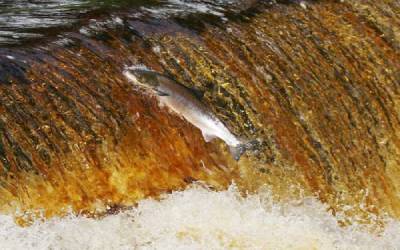Each year the conservation status of 173 Scottish salmon stocks is assessed to support national legislation using information on the number and biological characteristics of returning adult salmon collected from rod fisheries and fish counters. In this process the estimated total number of salmon is compared to internationally agreed limits which aim to maintain stocks at sustainable levels. This determines whether salmon can be retained by fisheries, with those of poor conservation status being catch and release fisheries only. These limits are set for the protection of salmon stocks rather than fisheries. Greater numbers of salmon may be required to maintain current fisheries.
Salmon returning to Scotland in the spring are subject to additional protections because their numbers have declined to, and remain at, historically low levels. For example, in addition to local voluntary measures Scottish Government has made it illegal to retain any salmon before 1 April each year through national and Tweed catchment legislation.
The number of adult salmon returning to Scottish waters estimated through this process can be combined to provide an overview of trends in abundance for the whole of Scotland. These numbers are used within international stock assessment models and management.
The data on Scottish Atlantic salmon stocks presented in these pages can be downloaded.
READ MORE: GOV.SCOT

